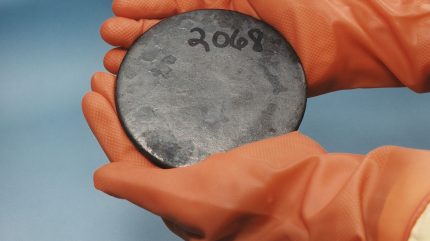
Cosa Resources has signed an agreement to acquire two mineral claims in the Athabasca Basin, Saskatchewan, Canada, from Skyharbour Resources.
The acquisition will double the size of Cosa Resources’ wholly owned Orbit Uranium Project to 12,718 hectares.
It involves an exchange of 250,000 common shares and is subject to regulatory approvals.
Under the agreed terms, Cosa will gain full ownership of the claims with the consideration shares being subject to a four-month hold period under Canadian securities laws.
Following this period, half of the shares will become free trading, with the remaining 50% becoming free trading after six months due to voluntary resale restrictions agreed upon by the vendor.
The transaction awaits the approval of the TSX Venture Exchange.
How well do you really know your competitors?
Access the most comprehensive Company Profiles on the market, powered by GlobalData. Save hours of research. Gain competitive edge.

Thank you!
Your download email will arrive shortly
Not ready to buy yet? Download a free sample
We are confident about the unique quality of our Company Profiles. However, we want you to make the most beneficial decision for your business, so we offer a free sample that you can download by submitting the below form
By GlobalDataThe two claims, which represent a small portion of the Skyharbour-owned Karin Property, are located in Saskatchewan around 22km south of the Key Lake mill.
Cosa president and CEO Keith Bodnarchuk said: “Cosa will continue to identify and pursue cost-effective opportunities to add to our pipeline of exciting projects and drill targets as we remain fully funded to complete all of our exploration plans into 2025.”
Situated 19km south of the Athabasca Basin and 22km from the Key Lake mill and former Key Lake Mine, the Orbit Project is strategically positioned in an area with historic uranium production yet limited modern exploration.
Cosa exploration vice-president Andy Carmichael said: “The northern magnetic-low trend at the Orbit Project hosts known occurrences of uranium mineralisation, hydrothermal alteration and reactivated graphitic faulting on strike to the south-west, all of which can be important indicators of a uranium deposit on trend.
“We are excited to have nearly doubled the completely untested strike length of this trend contained by the Orbit Project. Furthermore, the southern portion of the Orbit Project hosts several complex magnetic low trends that have not been significantly explored and warrant additional work.”
Skyharbour will retain the ownership stake in five other adjacent claims that constitute the new Karin Project.



